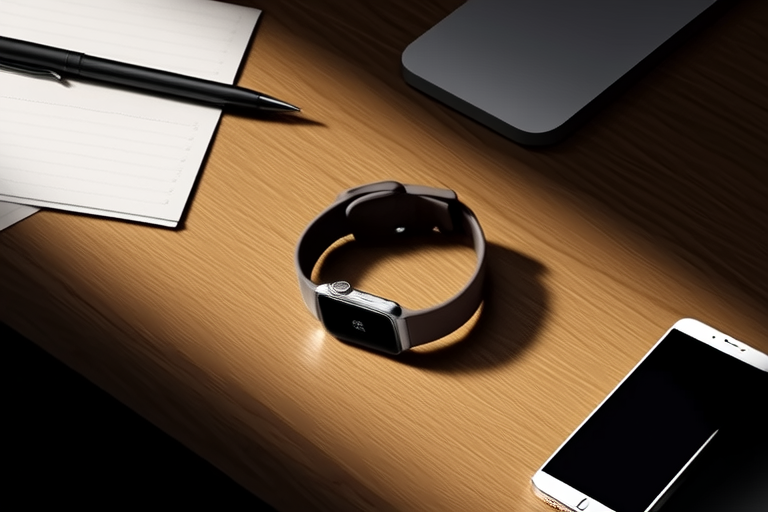Beyond Fashion: The Hidden Capabilities of Advanced Wearable Devices
Introduction
The world of wearable technology has come a long way since the introduction of simple pedometers and basic fitness trackers. What was once merely a fashion statement or a tool for tracking steps has evolved into sophisticated devices capable of performing complex tasks. From smartwatches to augmented reality glasses, wearables now offer an array of functionalities that go beyond aesthetics. These devices are designed to enhance our daily lives by providing real-time data, improving health outcomes, and integrating seamlessly with other smart technologies. As we move further into the digital age, the capabilities of wearable devices continue to expand, promising even more innovative solutions in the near future.
Health Monitoring
One of the most significant advancements in wearable technology is the ability to monitor health in real time. Modern wearables are equipped with sensors that can track vital signs such as heart rate, blood oxygen levels, and even sleep patterns. These devices can also detect anomalies that may indicate underlying health issues, potentially aiding in the early diagnosis of conditions like arrhythmias or sleep apnea. For instance, some smartwatches now feature ECG functionality, which allows users to record electrocardiograms directly from their wrists. This technology not only provides immediate feedback but also helps healthcare professionals make more informed decisions regarding patient care. Additionally, continuous glucose monitoring systems integrated into wearables offer valuable insights for individuals managing diabetes, enabling them to maintain better control over their blood sugar levels.
Data Analysis and Personalization
The collection and analysis of data form the backbone of personalized health management through wearable devices. Machine learning algorithms play a crucial role in processing large amounts of user-generated data, identifying trends, and offering actionable recommendations. Predictive analytics enable wearables to forecast potential health risks based on historical data, allowing users to take proactive measures before problems arise. Users can leverage this information to adjust their routines, optimize performance, and achieve their wellness goals. Moreover, personalized dashboards provide visual representations of key metrics, making it easier for individuals to understand their progress and stay motivated. By combining raw sensor data with contextual factors like environment and activity level, wearables offer tailored advice that caters specifically to each individual’s unique needs.
Integration with Smart Ecosystems
Wearable devices thrive when integrated into broader smart ecosystems, creating seamless interactions between different gadgets. Whether connecting to smartphones, home assistants, or other IoT devices, these connections enhance user experiences by facilitating communication across platforms. For example, smartwatches can sync notifications from your phone, allowing you to stay connected without needing to reach for your device constantly. Similarly, voice-activated assistants like Amazon Alexa or Google Assistant can be controlled via wearable commands, adding convenience to daily tasks. Interoperability ensures that all components work together harmoniously, enhancing functionality and usability while reducing complexity for end-users.
Security and Privacy
With increased connectivity comes heightened concern about data security and privacy. Wearable manufacturers must prioritize safeguarding sensitive personal information against unauthorized access or misuse. Encryption techniques, secure authentication methods, and robust privacy policies help protect user data while maintaining trust. It’s essential for companies to implement strong encryption standards when transmitting and storing health-related information. Furthermore, transparent communication about data usage practices builds confidence among consumers who rely heavily on these devices for accurate readings and reliable services.
Future Prospects
The horizon holds exciting possibilities for advancements in wearable technology. Augmented reality (AR) integration could revolutionize how we interact with our surroundings, offering immersive experiences through head-mounted displays. Biometric authentication might become standard practice for securing digital identities, ensuring only authorized persons gain access to critical resources. Medical applications will likely expand beyond mere monitoring to include therapeutic interventions delivered directly through wearable interfaces. As research continues, new discoveries promise to push boundaries further, opening doors to unprecedented opportunities in both consumer electronics and professional fields alike.
Conclusion
In conclusion, advanced wearable devices represent much more than just stylish accessories; they serve as powerful tools for enhancing quality of life. Through continuous innovation, these gadgets evolve rapidly, introducing novel features that address pressing challenges faced by society today. Their ability to monitor health closely, analyze vast quantities of data accurately, connect seamlessly within smart environments, and maintain stringent standards of security underscores their immense value. As we look ahead, there’s no doubt that wearable tech will play an increasingly pivotal role in shaping tomorrow’s world—one where technology works hand-in-hand with humanity towards greater well-being.


